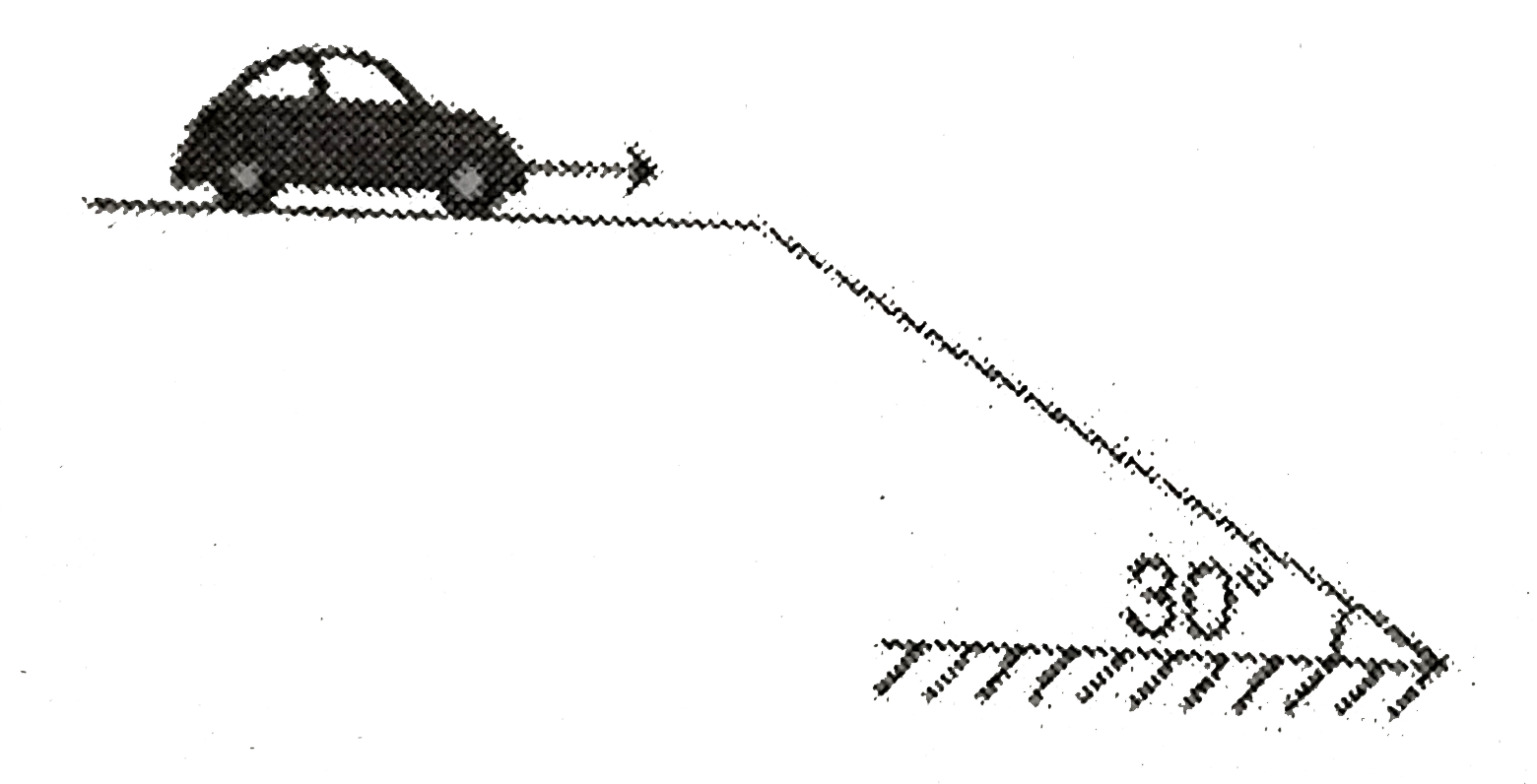A car going at a speed of 6m/s when it encounters a 15m slope of angle 30∘. The friction coefficient between the road an tyre is 0.5. the driver applies the brakes. The minimum speed of car with with which it can reach the bottom is (g=10m/s2)

4m/s
3m/s
7.5m/s
8.45m/s
The correct Answer is:C
a=ugcos30∘−gsin30∘
=0.5×10×√32−102=−0.675m/s2
⇒a=0.675m/s2 is downward direction
⇒v2=u2+2as=36+2×0.675×15
v2=56.25⇒v=7.5m/s
μ=1√3=0.577≈0.6
Topper's Solved these Questions
- LAW OF MOTIONBOOK - NARAYNACHAPTER - LAW OF MOTIONEXERCISE - EXERCISE - III
20 Videos
- KINETIC THEORY OF GASESBOOK - NARAYNACHAPTER - KINETIC THEORY OF GASESEXERCISE - LEVEL-III(C.W)
52 Videos
- MATHEMATICAL REVIEW & PHYSICAL WORLDBOOK - NARAYNACHAPTER - MATHEMATICAL REVIEW & PHYSICAL WORLDEXERCISE - C.U.Q
13 Videos
Similar Questions
A car is going at a speed of 21.6 km/hr when it encounters a 12.8 m long slope of angle 300 figure. 12√3. Shwo tht no matter how hard the driver applies the brakes, tehcar will reach the bottim with a speed greater than 36 km/hr. Take g=10ms2

View SolutionA car goes on a horizontal circular road of radius R. The speed of car is increasing at constant rate a m/s2. If the friction coefficient between the road and the tyre is μ, then the limiting speed of car is
View Solution
Knowledge Check
The coefficient of friction between the tyres and the road is 0.1. The maximum speed with which a cyclist can take a circular turn of radius 3 m without skidding is (Take g=10ms−2)
A√15ms−1B√3ms−1C√30ms−1D√10ms−1The coefficient of friction between the tyres and the road is 0.25. The maximum speed with which a car can be driven round a curve of radius 40 m without skidding is (Take g=10ms−2)
A40ms−1B20ms−1C15ms−1D10ms−1A car starts from rest. It has to cover a distane of 500m from rest to rest. The coefficient of friction between the road and the tyre is 1/2. the minimum time in which the car can cover this distance is? (g=10m/s2)
A20sB10sC30sD15s
A 2000 kg car has to go over a turn whose radius is 750m and the abgle of slopw is 5∘. The coefficient of friction between the wheels and the road is 0.5. What should be the maximum speed of the car so that it may go over the turn without slipping ?
View SolutionThe coefficient of friction between the tyres and the road is 0.25. The maximum speed with which a car can be driven round a curve of radius 40 m without skidding is (assume g=10ms−2)
View SolutionA vac moving with a speed of 108km/h on level road where coefficient of friction between tyres and rod is 0.5 .For the safe driving of van the minimum radius of curvature of the rod will be (g=10m/s2)
View SolutionA van is moving with a speed of 108 km / hr on level road where the coefficient of fraction between the tyres and the road is 0.5 for the safe driving of the van , the minimum radius of curvature of the road will be ( g=10m/s2)
View SolutionA car is taking a turn of radius 400 m on a horizontal circle . Coefficient of friction between the ground and tyres of car is 0.2 . Find the maximum speed with a safe turn can be taken
View Solution
